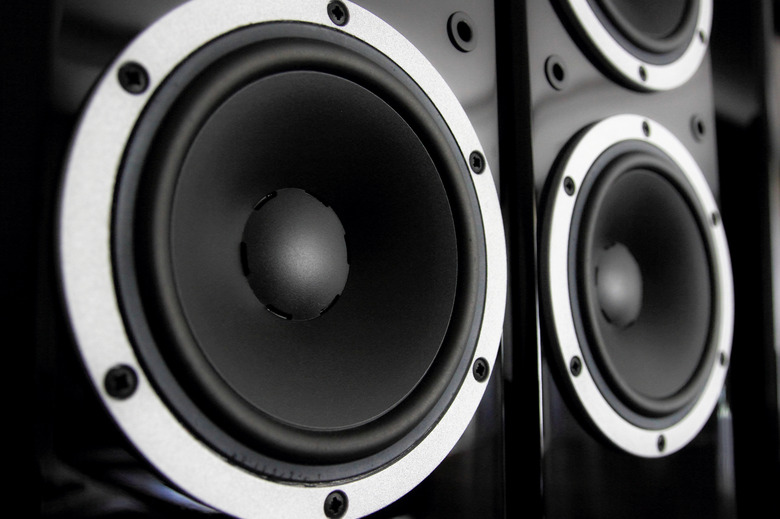Household Objects That Use Magnets
Your home contains many kinds of magnets you might not know about. Some, like the magnetic strip on a credit card, are plainly visible; others are hidden inside appliances, speakers, toys and other devices. The magnets may be permanently magnetic or become magnetic only with electric power. The attracting and repelling forces magnets produce make them useful for motors, speakers, door latches and data storage devices.
Home Audio Speakers
Home Audio Speakers
The speakers in your stereo contain magnets. The speaker consists of a stationary magnet in a metal frame, a paper diaphragm and a wire coil molded into the diaphragm's center. When an electric current flows through the coil, magnetic forces between the coil and the stationary magnet make the diaphragm vibrate in and out. The vibration produces the music you hear. Almost every kind of speaker has a magnet, from tiny earbuds to large loudspeakers.
Motorized Household Appliances
Motorized Household Appliances
Your vacuum cleaner has an electric motor that runs by magnetism. Inside the motor, wire coils produce repelling forces when electric current flows through them. The forces make the motor spin. Unlike refrigerator magnets, which use no power, the magnetic coils in the motor have no magnetism when the vacuum cleaner is turned off. The coils have much stronger magnetism than the magnets you stick on your refrigerator door.
Cabinet Door Latch
Cabinet Door Latch
The doors to many medicine cabinets have a magnetic latch. A magnetic latch consists simply of a permanent magnet in the cabinet and a metal piece on the door. The magnet has just enough force to hold the door shut and opens easily when you pull on it. The magnetic refrigerator door seal replaced mechanical door latch mechanisms in the late 1950s as a safety measure.
Blocks, Trains and Other Toys
Blocks, Trains and Other Toys
Many building toys have magnets in them. The magnets make the building blocks stick together. You'll also see magnet couplers used to connect the cars in a toy train set. Magnetic chess and checkers sets keep the game organized with a little magnet in each game piece. By themselves, magnets make fascinating toys and clearly demonstrate magnetic principles.
Debit and Credit Cards
Debit and Credit Cards
The bank cards in your wallet have a dark magnetic strip on the back. The strip contains data codes including the account number and your name. When you swipe the card at a store, an electronic device in the reader senses the magnetic codes and converts them into readable words and numbers. Note that the data strip has relatively weak magnetism; contact with strong magnets can damage or erase it.
Cite This Article
MLA
Papiewski, John. "Household Objects That Use Magnets" sciencing.com, https://www.sciencing.com/household-objects-use-magnets-7425188/. 13 March 2018.
APA
Papiewski, John. (2018, March 13). Household Objects That Use Magnets. sciencing.com. Retrieved from https://www.sciencing.com/household-objects-use-magnets-7425188/
Chicago
Papiewski, John. Household Objects That Use Magnets last modified March 24, 2022. https://www.sciencing.com/household-objects-use-magnets-7425188/
